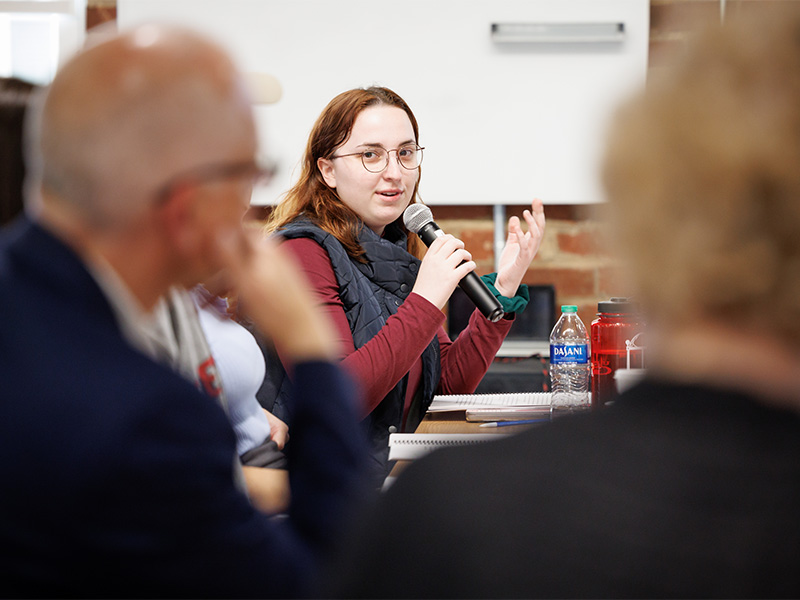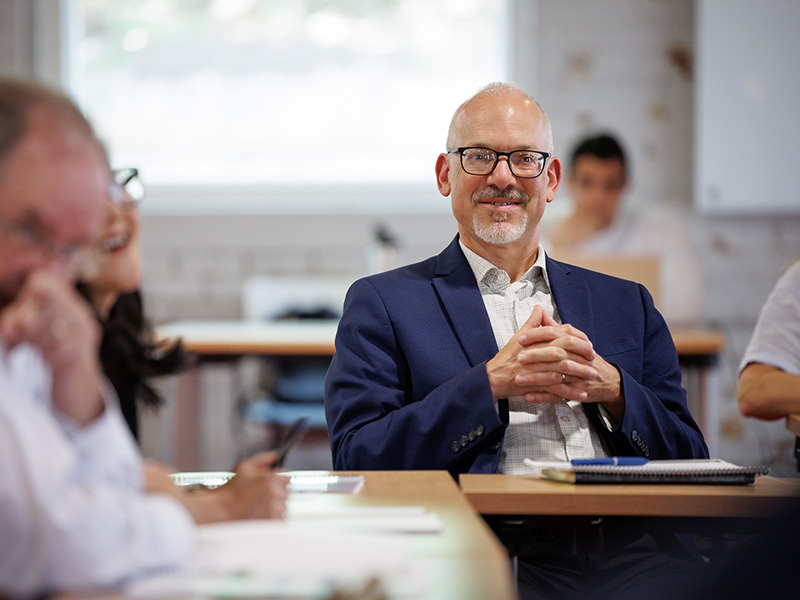It’s hard to know what makes some cities and neighborhoods attract artists and become incubators for creative culture.
University of Georgia Terry College of Business MBA and Master of Science in Business Analytics students took on the challenge of defining those factors for their “Business Analytics for the Creative Economy” course.
For their course project, students developed a plan for gathering and quantifying data on the health of Athens’ creative economy and how to use a new analytics “dashboard” to grow the city’s $96 million creative economy.
“We learned about the analytics being used now — things like the hotel occupancy rates and foot traffic numbers,” MSBA student Emmanuel Charles told decision-makers, including Athens-Clarke County Mayor Kelly Girtz, ACC Small Business and Entrepreneurship Coordinator Myung Cogan, Athens Area Chamber of Commerce president David Bradley, Athens Downtown Development Authority director of business services Linda Ford and David Lynn, director of planning and outreach for the Athens Downtown Development Authority.

“We want to branch out more into measures of social capital and how we can grow that social capital,” Charles said. “We want to institute a slate of predictive and prescriptive analytics that can give insight into how to put Athens on the map for creators everywhere.”
The students organized these metrics into an “Athens Creative Economy Dashboard”. The dashboard included standard metrics such as hotel occupancy rates and numbers of jobs in creative industries, with novel metrics in social network analysis and semantic mapping that would measure the city’s cultural pulse.
“The creative community in Athens is a valued asset, and the data in the analytics project helps validate the financial, social and cultural impact,” Cogan said. “We have to make sure our artists, musicians and the organizations and businesses that provide creative programming have the resources and support they need.”
The concept of a “creative economy” as something to be encouraged and measured was proposed by John Howkins in his 2001 book “The Creative Economy.” Over the last 20 years, significant work by city planners and economic developers across the United States and globally has found ways to measure the impact of creative economies and support them, said David Sutherland, a senior lecturer in the Georgia MBA program who led the business analytics course.

“A lot of work and research has been done around the world — including significant studies by the UN, the US and the EU — to understand the dynamic industries included in creative economies,” Sutherland said. “This has taken the notion of ‘the creative economy’ from the ephemeral to a serious, measurable, and manageable business domain.”
Even if his students never work in the arts or economic development, the exercise of analyzing the myriad factors and data streams impacting a local creative economy is an excellent way to understand and utilize the tools needed in business analytics environments.
The project also gives Athens-Clarke County’s business development community new tools to work with when supporting the growing city without sacrificing what makes it a creative hub.
“Our course started with a global perspective and then narrowed in on our creative city — Athens, Georgia,” Sutherland said. “The students became part of, and had an impact on, our local creative economy and developed a keen understanding of creative economies more generally.”
